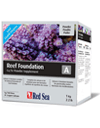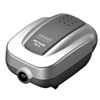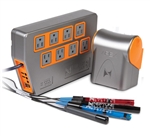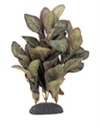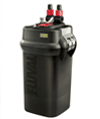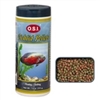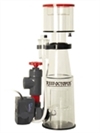Protein skimmers are simple devices with only one moving part (
the pump impeller). Yet, quite often they disappoint. This often happens when people initially purchase a skimmer, and then after the skimmer has been running for some time. While occasionally this is due to poor skimmer design or pump failure, most often poor skimmer performance is an issue of not understanding how skimmers work, how they need to be adjusted, and how they need to be maintained. We sincerely want all of our customers to have properly working skimmers and successful reef tanks. This primer should solve most of your skimmer issues.
Has Your Protein Skimmer Been Broken In?
A new protein skimmer requires a break-in period of about 1-2 weeks before it reaches optimum performance. Why? For one, all skimmers must run for some time to allow all residual oils on the acrylic from production and handling to break down before it builds a steady head of foam. The break-in period will be shorter for established tanks and longer for new tanks. In the first few weeks, you may have many small micro bubbles in the tank. This is normal. This will lessen over time.
During the break-in period, you might make small adjustments to optimize the air-water mix. Make very small adjustments and wait for changes. Ideally, you want very small bubbles. Small bubbles have the most surface area. You donít want the bubbles to be returned to the tank but donít over-adjust in the first few weeks as during that time bubbles are normal.
Be patient. Assuming the skimmer you purchased is a well-designed skimmer that has no broken parts and has a pump that is functioning, the skimmer will work after the break-in period. It will continue to work for some time as long as it is adjusted, used properly, and cleaned on a regular basis.
Are There Bubbles?
When skimmers do not work the most common problem is a lack of air. If air is being properly mixed with the water your skimmer should be producing bubbles. If your skimmer is producing bubbles then chances are there is nothing wrong with your skimmer. It may just need to break in, be cleaned, or be readjusted.
If your skimmer is not producing bubbles, or not producing as many as it has in the past, your problem is likely with the pump or injector. Disassemble your pump and clean as much as possible with a toothbrush. Make sure that the pumpís impeller is not swollen or broken and then reassemble. Check your air hose and venturi injector. If they are clogged with salt creep or have a pinched hose this can cause your problem. If either the pump or injector is exceptionally dirty you may need to soak them in vinegar overnight.
Does Your Skimmer Overflow?
Quite often you will get too much air or water and the skimmer will overflow. There are a number of possibilities when this happens.
If your skimmer constantly overflows with foamy water no matter how you adjust it there can be several causes. Make sure you first adjust your skimmer by raising the collection cup, opening the outlet valve, closing the air valve, or reducing the pumpís speed.
New skimmers often go through a break in period where the skimmer reacts to oils from the process of manufacturing the skimmer. This usually shuts down skimmer production but it can also send it into overdrive. Run your new skimmer for at least a week and let it overflow. After this time it should break in and return to normal.
Some additives and foods can cause skimmers to overflow. Water conditioners, such as Amquel will definitely cause a skimmer to overflow. Make a note of what you have recently added to your tank and take some time before adding anything else. Once the skimmer calms down you can add the foods and additives one at a time and watch your skimmer to find which causes it to overflow.
Make sure your skimmer is at the right water height. In-sump skimmers have a recommended water level. If the water level is higher than the skimmer is designed to operate in, then the skimmer can overflow. You can adjust the water level by draining water from your tank or using a skimmer stand. Using an
Auto Top Off will keep the water level consistent and lead to more consistent skimmer production. Keep in mind that when your return pump turns off the sump water level will rise and cause your skimmer to overflow. A
Reef Octopus Delay Timer can solve this by keeping your skimmer off for a few minutes after a power outage so the sumpís water level can settle before the skimmer turns back on.
Nothing Is Collecting In The Cup?
If nothing is collecting in the skimmer cup, and there are organics in the tank, then start troubleshooting by adjusting your skimmer. Different skimmers have different ways for you to adjust them. Some have an outlet valve, some have an air adjustment, some have a collection cup that can be adjusted and some have a variable speed pump. The following will potentially increase the amount of skimmate in your collection cup:
-Close the outlet valve
-Lower your collection cup
-Open your air inlet
-Speed up your pump
If still nothing collects then you can look at other causes.
As covered in the first section, new skimmers have a break-in period where the oils from manufacturing the skimmer can shut down skimmer production. Wait at least a week for the skimmer to break in. Additionally, skimmers need something to pull out. If your tank is new or very clean the skimmer could be working but there are no proteins in the water for it to pull out.
Check and make sure the skimmer pump and injector are clean and intact. Disassemble and clean these parts just as you would if there were no bubbles.
Your in-sump skimmer may be in too little water. Raise the water level in the sump by adding water to the sump. Adding an Auto Top Off will ensure the water level stays consistent.
Is The Skimmate Too Light?
Skimmate can be very dark, almost black. Or it can be light tea-colored. Is one better than the other and what does the color of the skimmate tell you? When your skimmate is lighter colored it is taking out more from your tank. This can include saltwater and trace elements, which you donít want to remove. However, it is removing more of everything, and this may be useful if you have an algae problem.
If your skimmate is too light and watery for your needs, there are a few things you can try. Start by adjusting your skimmer. Raising the cup, opening the outlet valve, closing the air valve, and slowing down the pump can all lead to darker skimmate
If you have a nano skimmer you may only be able to get light skimmate. Because nano skimmers are so small they donít have much drying time which is the time it takes for the water to separate from the bubbles. Light skimmate is normal with nano skimmers.
Some additives can cause light skimmate. Carbon dosing with vodka, vinegar,
Two Little Fishies NPX BioPlastics, or using
Brightwell Aquatics Reef BioFuel can lead to a lighter sweet-smelling skimmate.
Light skimmate can also be caused by two high of a water level in the sump. Adjust just as described previously for an overflowing skimmer.
Is The Skimmate Too Dark?
If your skimmate is too dark, or it only coats the neck of the skimmer, then your skimmer is likely fine but could be readjusted. Lower the cup, close the outlet valve, open the air valve, or speed up your pump.
Keeping your Skimmer Working
Using a protein skimmer is like tending a fire. You need to regularly watch the skimmer and respond to what it does. Maintain your skimmerís performance by doing the following:
- Keep a constant water level through an Auto Top Off
- Clean the skimmer cup and neck at least twice a week (preferably, daily). Consider an Auto Neck Cleaner if this is too much work
- Clean your skimmerís pump and air injector every 3-6 months
- Give the entire skimmer pump and body a deep clean once a year
- Watch the skimmerís performance and adjust as necessary to produce the skimmate you want







